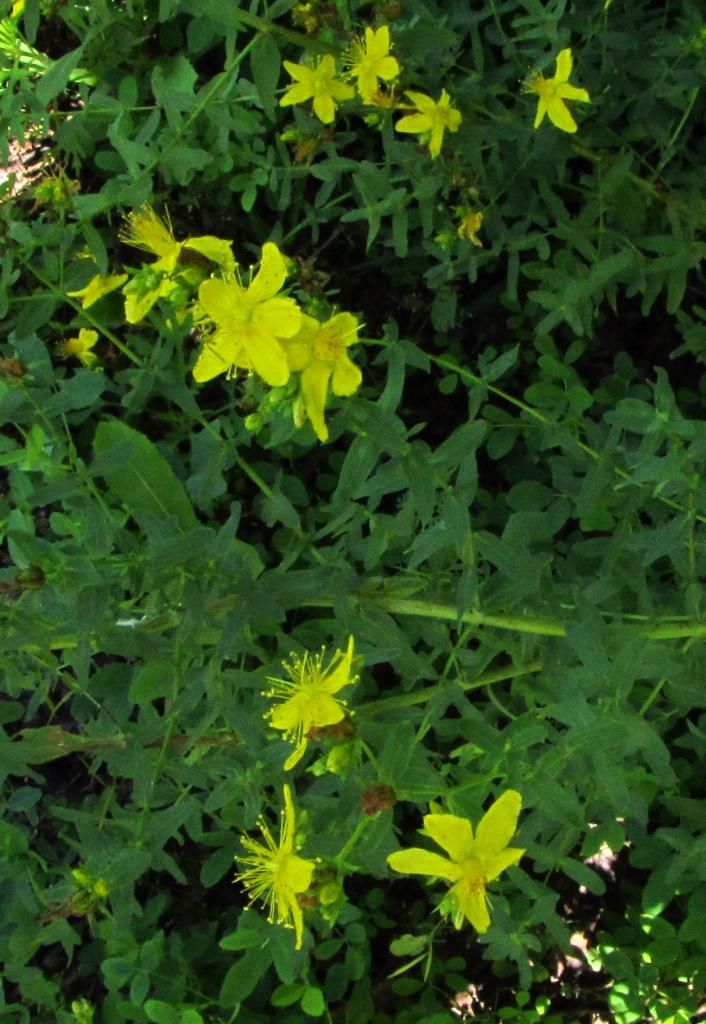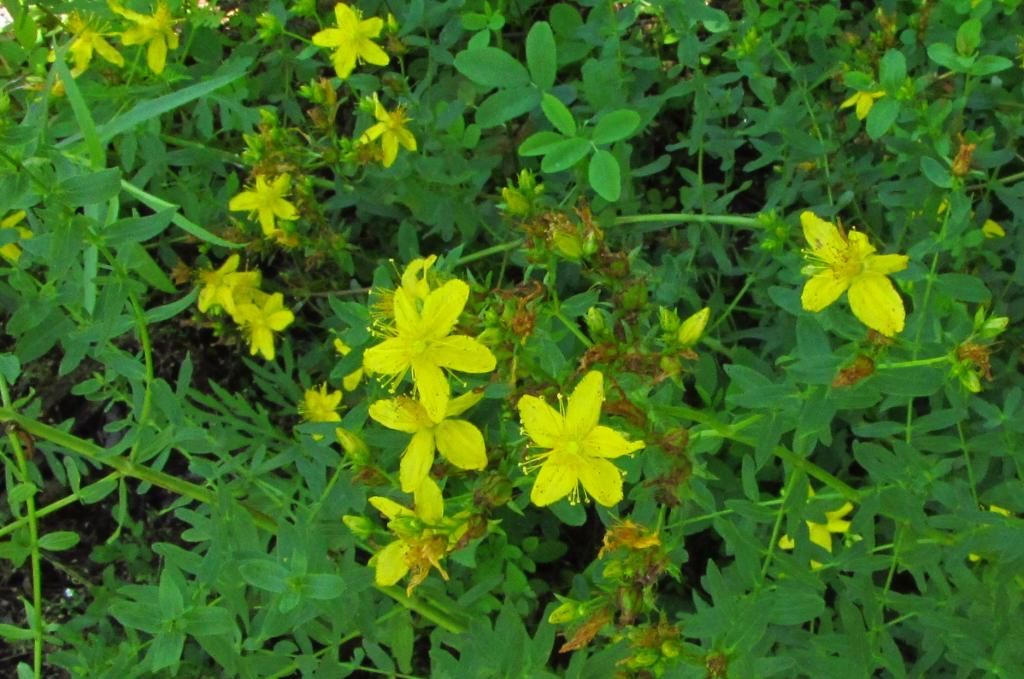Today’s featured wildflower has been used medicinally for thousands of years and is still a common herbal remedy for depression. That said, St. John’s Wort can limit the effectiveness of many prescription medications, and some drug interactions could even be dangerous.
The St. John’s Wort family (Hypericaceae) includes Spotted St. John’s Wort (Hypericum punctatum), which is native to most of the eastern U.S., and Common St. John’s Wort (Hypericum perforatum), a European native that has spread across most of North America. The plants are easily confused, because common St. John’s Wort can also have spots, though more faint than on spotted St. John’s Wort.
I think the photographs I’ve posted below depict common St. John’s Wort. The Illinois Wildflowers website describes the leaves and flowers in detail and notes that the plant is common in “mesic to dry sand prairies, barren savannas, degraded weedy meadows, gravelly areas along railroads and roadsides, pastures and abandoned fields, and sterile waste areas. There is a preference for disturbed areas with little vegetation.” That description applies to the part of the Meredith bike trail where I took these pictures a few weeks ago. Note to farmers: sheep and goats “readily graze” this plant but can die from a toxic reaction. Because common St. John’s Wort can be invasive, it is considered a noxious weed in some states to the west of Iowa.
This post is also a mid-week open thread: all topics welcome.
Lots of wildflowers have five yellow petals. The many stamens (usually more than 20 on each flower) help me recognize St. John’s Wort.





